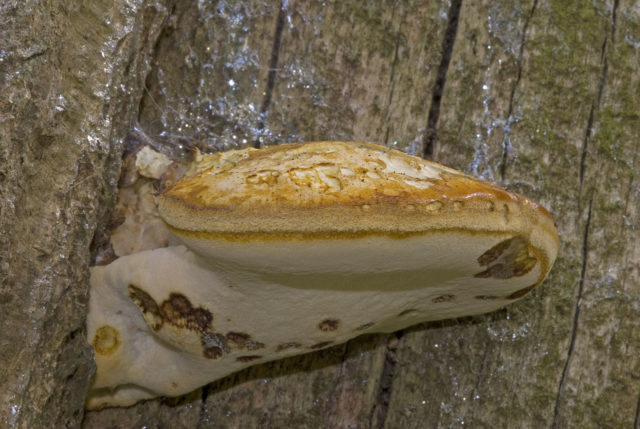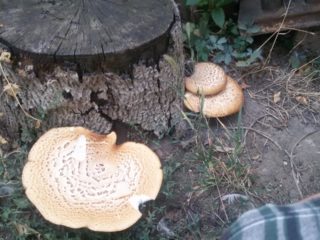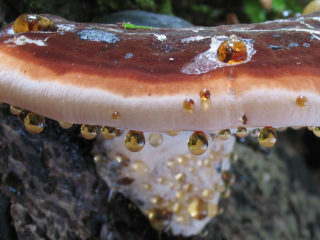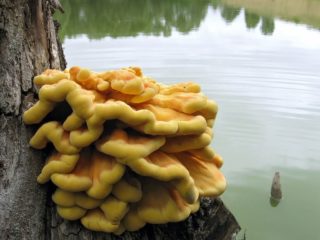Content
Piptoporus quercinus is also known as Piptoporus quercinus, Buglossoporus quercinus or oak polypore. Species from the genus Buglossoporus. Belongs to the Fomitopsis family.

In some specimens, a rudimentary, elongated leg is identified
What does Piptoporus oak look like?
A rare representative with a one-year biological cycle. The cap is large, can reach up to 15 cm in diameter.
The external characteristics of Piptoporus oak are as follows:
- At the beginning of the growing season, the sessile fruiting bodies are elongated in the form of a drop; during growth, the shape changes to a round, fan-shaped one.
- In young specimens, the flesh is dense, but not hard, with a pleasant smell, white.Over time, the structure dries out and looks porous and corky.
- The surface of the cap is velvety, then the film becomes smooth, dry with longitudinal shallow cracks, thickness - up to 4 cm.
- The color of the upper part is beige with a yellowish or brown tint.
- The hymenophore is thin, tubular, dense, porous, and darkens to brown at the site of damage.
At the end of the biological cycle, the fruiting bodies become fragile and break easily.

Color does not change with age
Where and how does it grow
It is quite rare, found in the Samara, Ryazan, Ulyanovsk regions and the Krasnodar Territory. Grows singly, rarely in 2-3 copies. It is parasitic only on living oak wood. In the UK it is listed as an endangered species; in Russia it is so rare that it is not even listed in the Red Book.
Is the mushroom edible or not?
The mushroom has been poorly studied, so there is no information on toxicity. Due to its rigid structure, it has no nutritional value.
Doubles and their differences
Externally, Hartig's tinder fungus is similar to Piptoporus. It forms large fused fruiting bodies; the similarity is determined only at the beginning of the growth of the Hartig tinder fungus in structure and color. It then becomes larger, with a stepped surface and thick, woody flesh. Inedible.

Grows only on coniferous trees, more often on fir trees
The false aspen polypore has a cap that resembles piptoporus and grows on living trees, mainly aspens. Perennial inedible mushroom.

Contrasting color: dark brown or black at the base, and white with a grayish tint at the edges
Conclusion
Piptoporus oak is a representative with a one-year biological cycle; it is rare in Russia. Grows singly or in small groups on living wood.The structure is hard, corky, and has no nutritional value.








